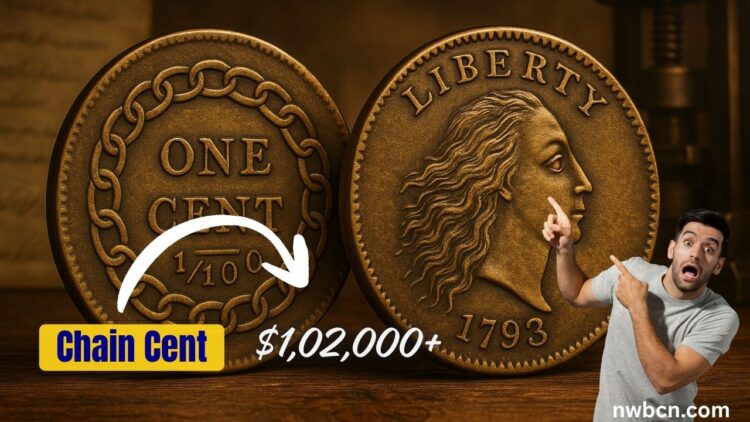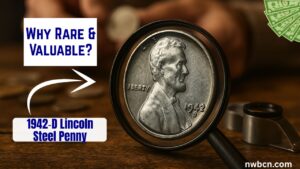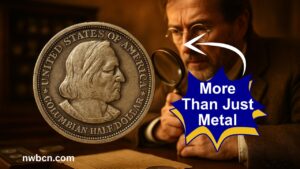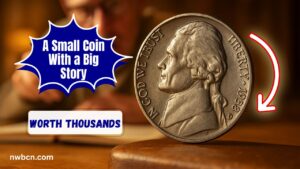The 1793 Chain Cent, officially called the 1793 Flowing Hair Chain Cent, remains one of the most iconic and valuable American coins.
As the first large cent struck at the Philadelphia Mint for public circulation, it featured a unique chain reverse symbolizing unity—but instead, many found it ominous. Today, its scarcity, controversial design, and early origin make it a haunting treasure in the world of numismatics.
1. A Coin Born from Controversy: The Chain Design
- Struck in 1793, this was the first mass-produced cent: 36,103 struck from February 27 to March 12, 1793.
- The reverse shows a 15-link chain, representing the states of the Union. However, many interpreted it as a symbol of bondage; newspapers called it a “bad omen for Liberty.”
- Criticism led to the rapid replacement of the design by April 1793—making the Chain Cent a one-crop issue.
2. Extremely Limited Survival and Striking Challenges
- Of the original 36,103 coins, only about 1,000 total survivors exist today, and less than 200 in the Chain Cent variety, per Breen and numismatic census data.
- High-grade uncirculated Chain Cents are exceedingly rare; most survivors are heavily worn due to circulation. Even well-preserved pieces sell for hundreds of thousands.
3. Modern Auction Records Reveal Its Value
| Variety | Grade | Auction Record |
|---|---|---|
| Chain Cent “Periods” (S-4) | MS66 BN | $2.35 million (2015, Heritage) |
| “AMERI.” variety (period abbr.) | MS64+ BN | $1.5 million (2019, Heritage) |
| Typical VF–EF | Circulated | $3,000–$10,000 |
- Record price: $2.35M in 2015 for a Chain, Periods variety in MS66 brown.
- AMERI. variety in MS64+ sold for $1.5M in 2019.
- Even heavily worn examples in Fine to Extremely Fine condition still fetch $3,000–$10,000.
Overview of 1793 Chain Cent Varieties & Values
| Variety | Mintage | Survivors Estimate | Uncirculated Grade Value | Circulated Value |
|---|---|---|---|---|
| Chain “AMERI.” | part of 36,103 | ~187 total survivors | $1.5M (MS64+ BN) | $3k–$10k |
| Chain “AMERICA” | same die group | similar survivors | $1.5M–$2.3M (MS65 BN) | $3k–$10k |
| Chain “Periods” S-4 | same batch | very few quality pieces | $2.35M (MS66 BN) | indis tuated |
Why the 1793 Chain Cent Continues to Haunt Collectors
- First federal circulation cent – Birth of the U.S. coinage system
- One-off design – The chain reverse was quickly abandoned due to public backlash
- Scarcity + condition rarity – Few survive, even fewer in high mint-state grades
- Historical symbolism – Encourages reflection on early American fears and perceptions of liberty
How to Identify & Authenticate a Chain Cent
- Check the reverse legend: “UNITED STATES OF AMERI.” indicates the first working die; full “AMERICA” indicates later dies.
- Edge design: Should feature bars and vines, a unique characteristic of the issue.
- Condition classification:
- VG–F: most common, limited detail, still worth thousands
- AU–EF: rare, sells tens of thousands
- MS: extremely rare and deliver multi-million prices
- Certification essential: Verify through PCGS or NGC to confirm authenticity and grade.
Broader Historical Narrative Behind the Chain Cent
- Reflects early Mint experimentation, quickly replaced by Wreath and Liberty Cap cents in 1793.
- Chain imagery mirrored contemporary fears—some saw it as binding rather than unity. Suggests complex post-Revolution attitudes.
- The limited 1793 Chain Cent production highlights the turbulent infancy of U.S. coinage.
The 1793 Chain Cent has earned its place among America’s rarest coins not only due to scarce survival and record-setting auction prices, but also for the cultural weight it has carried since its creation.
It was the first coin of its kind, rejected by public sentiment, and now cherished as a tangible remnant of early American anxieties and pride.
Its haunting chain design still stirs debate—and its multi-million-dollar examples continue to solidify its status as a numismatic legend.
FAQs
Q1: Why was the chain design controversial?
The chain imagery, meant to symbolize Union, was perceived by many as representing bondage or oppression—earning harsh criticism in contemporary newspapers.
Q2: How many 1793 Chain Cents still exist?
Around 1,000 survivors total, with approximately 200 specifically Chain Cent types. Mint state examples are exceedingly rare.
Q3: What is the record price paid for a Chain Cent?
A 1793 Chain Cent (Periods variety) graded MS66 BN sold for $2.35 million in 2015.




